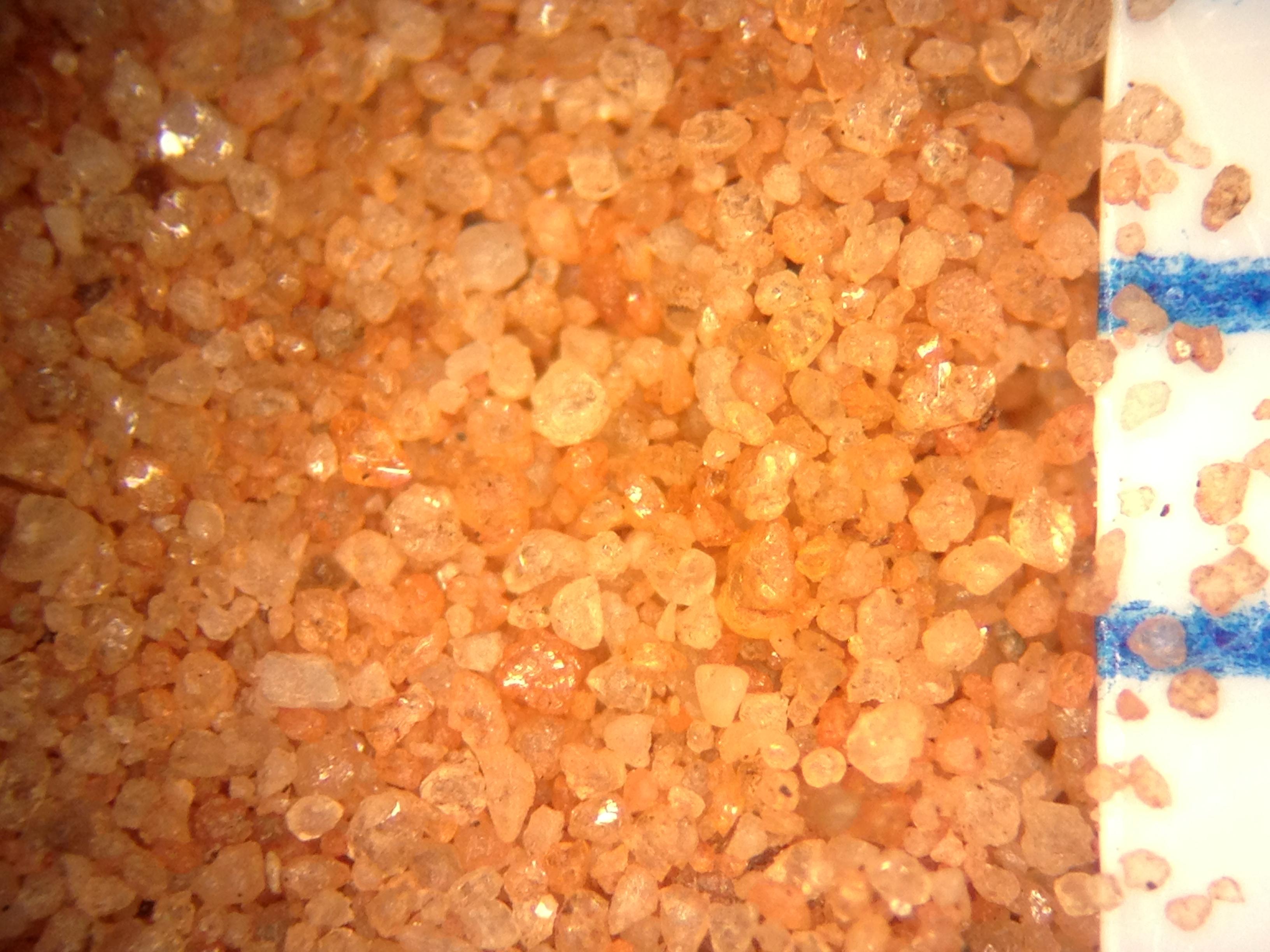Sand, Fay Canyon, Arizona
This sand was collected in Fay Canyon near Sedona, Arizona.
Macro Photograph (Click here for
images at higher magnification and polarized light.)
Welland, Michael, SAND: THE NEVER ENDING STORY, University of California Press, 2009.
http://www.microscopy-uk.org.uk/mag/indexmag.html?http://www.microscopy-uk.org.uk/mag/artjun01/clsand.html
(Good Information on the microscopy of sand, Great site for more information on microscopy in general)
http://www.scientificamerican.com/article.cfm?id=a-grain-of-sand-natures-secret-wonder
(Good Information on Sand with links to more information on sand)
http://www.sciencelive.org/component/option,com_mediadb/task,play/idstr,Open-feeds_fsc_exploring_sedimentary_processes_fsc02_02_m4v/vv,-2/Itemid,97
(Brief, very informative video on what can be learned from the shape of a sand grain.)
Definition/Function:
This sand was collected in Fay Canyon near Sedona, Arizona. It is derived from the Schnebly Hill Sandstone formation. The grains are quartz (SiO2) coated by hematite (Fe{sub 2}O{sub 3}). The red color comes from the presence of the hematite The grains are "frosted" rather than smooth, which indicates that the grain were wind-blown rather than water-worn.Significance in the Environment:
Characteristic Features:
Associated Particles:
References:
Greenberg, Gary, A GRAIN OF SAND: NATURE'S SECRET WONDER, Voyageur Press, 2008.Welland, Michael, SAND: THE NEVER ENDING STORY, University of California Press, 2009.
http://www.microscopy-uk.org.uk/mag/indexmag.html?http://www.microscopy-uk.org.uk/mag/artjun01/clsand.html
(Good Information on the microscopy of sand, Great site for more information on microscopy in general)
http://www.scientificamerican.com/article.cfm?id=a-grain-of-sand-natures-secret-wonder
(Good Information on Sand with links to more information on sand)
http://www.sciencelive.org/component/option,com_mediadb/task,play/idstr,Open-feeds_fsc_exploring_sedimentary_processes_fsc02_02_m4v/vv,-2/Itemid,97
(Brief, very informative video on what can be learned from the shape of a sand grain.)


